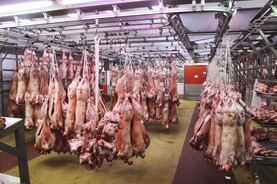SWS deadline
The 21 May closing date for applications to the National Sheep Welfare Scheme (NSWS) is approaching fast.
There is a 25-calendar day period after 21 May, during which late applications and any necessary supporting documentation will be accepted. Applications submitted during this timeframe will be subject to payment deduction of 1% per working day.
For example, an application submitted on 31 May would be subject to an 8% payment penalty. The final date for submitting a late application is 15 June.
The scheme terms and conditions advise that force majeure / exceptional circumstances cases may be considered after the 25-calendar day period, but that these cases will be subject to late application penalties.
The scheme, which offers payment of €8 per ewe, should be strongly considered by sheep producers in Ireland. Many features this week on sheep handling, dipping and tagging have useful information on scheme actions.
Eid al-Adha demand
Following on from last week’s snippet on likely demand from the Islamic religious festival of Eid al-Adha, the greatest appetite from factories is typically in the days leading up to the festival and over the start of the festival.
This year’s festival is set to fall between Sunday 16 June andThursday 20 June. This means demand is likely be strongest in the week before the festival, and the start of the week in which the festival falls.
Live export demand is generally concentrated in the weeks leading up to the festival to allow sufficient time for transporting.
In recent years demand has focused primarily on lambs, but reports suggest that lamb numbers could remain tight.
This is feeding in to reports indicating that demand may be stronger than envisaged for cull ewes and any remaining hoggets. Some buyers may have a preference for such sheep, with the earlier festival date meaning there will be fewer aged lambs available.
Grass management
Growth rates have jumped significantly over the last week to 10 days. The next couple of weeks are critical in terms of maintaining grass quality and setting the farm up for positive animal performance.
If not already completed, smaller batches of sheep should be grouped into larger batches.
This will allow areas to be grazed off faster, increasing sward recovery times and keeping good-quality grass ahead of priority animals.
There should also be a strong focus on capitalising on the lift in growth rates to save high-quality silage for feeding in late pregnancy.
Concentrate feed requirements can be greatly reduced where feeding silage in the low to mid 70s for DMD compared to feeding silage in the low to mid 60s for DMD.
One of the greatest factors affecting silage quality on sheep farms is cutting grass when it has gone to seed.
The aim for the main season silage should be to cut after a seven to eight week growing period, while for grass taken out of the rotation as surplus grass and baled, the focus should be to get grass cut as soon as possible so that it can return to the grazing rotation.
In good grass growing conditions, swards will utilise two units of nitrogen per day (2.5kg/ha/day of N).
This should be borne in mind when cutting surplus paddocks, which may have recently received an application of fertiliser.






 This is a subscriber-only article
This is a subscriber-only article










SHARING OPTIONS: